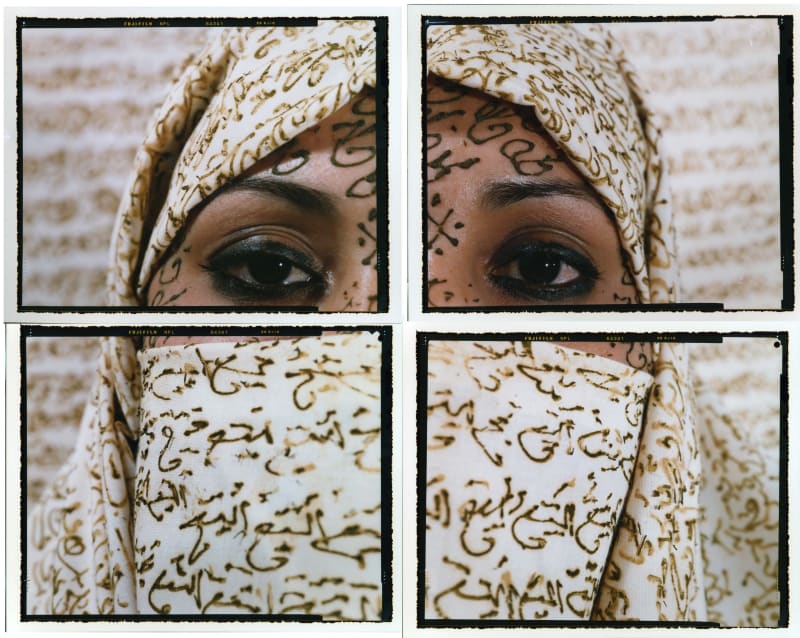The depiction of Arab women in art is a relatively recent phenomenon. For centuries, it was unconditionally banned; the only existing representations were 19th-century European fantasies of women lazing in harems.
Now, women from the Muslim world appear frequently in painting, sculpture and photography, yet the issue remains fraught.
A panel discussion at The New York Times Art for Tomorrow conference in Doha explored the subject of how Arab women are portrayed in art, with Lalla Essaydi, an artist who lives and works in New York and Marrakesh, and Touria El Glaoui, the founder of the 1:54 Contemporary African Art Fair and the daughter of the renowned Moroccan painter Hassan El Glaoui.
Ms. Essaydi was born into a privileged Moroccan household. Her father had four wives and 11 children, and she grew up in a predominantly female domestic environment, where a woman's role was defined as marrying and having children. That is what she did initially, moving to Saudi Arabia and raising a family. But in the early 1990s, she went to France to study art and later moved with her children to the United States.
Ms. Essaydi's works are a fusion of Arabic calligraphy and the female form. They are also a riposte to the 19th-century Orientalist paintings of Ingres, Delacroix, and Jean-Léon Gérôme, which were pure products of the imagination: semi-clothed concubines idly reclining in the harems of powerful men. These women were nameless and faceless objects of male desire; they had no personality.
Ms. Essaydi's artworks - a result of lengthy photographic shoots - show real women from her family and entourage reclining inside historic Moroccan palaces. Their faces, hands and clothes are covered with Arabic inscriptions.
During the panel discussion, Ms. Essaydi described her relationship with Orientalist art as complicated. While she was able to appreciate the beauty of those works, "I really cringe at their representation of the Eastern world and the degrading position of women in their art," she said. "When these Western artists come to a world that they don't know, and portray women as sexual victims and the Eastern man as depraved, the effect is to emasculate the Eastern man, and to challenge the notion of honor and family."
Speaking of herself and other women in the Arab world, she said, "We don't see ourselves in these paintings." Her aim, she said, is to break the stereotype by "appropriating the imagery or the style" of Orientalist painters.

